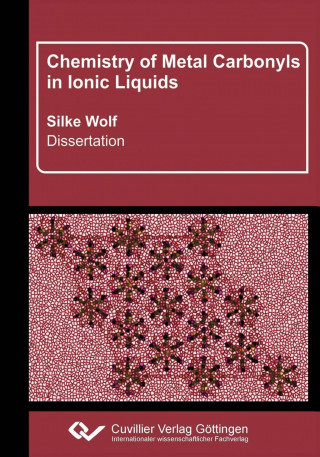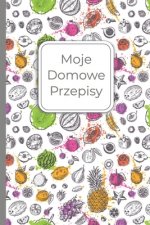
Доставка
Наръчник за пазаруване





Не ви допада? Няма проблеми! При нас имате възможност за връщане в рамките на 30 дни
 Подаръчен ваучер
на всякаква стойност
Подаръчен ваучер
на всякаква стойност
Няма да сбъркате с подаръчен ваучер. Получателят може да избере нещо от нашия асортимент с подаръчен ваучер.
Chemistry of Metal Carbonyls in Ionic Liquids. with an Annex of Doped Tin Oxide as a Transparent Conductor
 Немски език
Немски език
 120 b
120 b
30 дни за връщане на стоката
Може би ще Ви заинтересува


Kurzbeschreibung Das Ziel dieser Arbeit ist es, zu untersuchen, ob Ionische Flüssigkeiten eine neuartige Metalcarbonyl Chemie ermöglichen. Die Reaktivität von Metallcarbonylen in imidazoliumbasierten Ionischen Flüssigkeiten wurde untersucht. Dabei konnte eine Anzahl neuartiger Metallcarbonyl-, Koordinations und Netzwerkverbindungen realisiert werden: (BMIm)6(S)((Fe(CO)3)4(SnI)6I4)2, (BMIm)2((Fe(CO)3)4(SnI)6I4), (AIm)(FeI(CO)3(SnI3)2) (AIm: EMIm, EHIm, PMIm), Te2Fe(CO)4(Fe(CO)3)2, (BMIm)((Te2)3(Mn(CO)3)2(Mn(CO)4)3), (BMIm)(M(OTf)3), (M: Fe, Mn), (AIm)(Li(OTf)2) (AIm: BMIm, EMIm), (EMIm)((GeI4)2I), (Co(1,4-(CN)2C6H4)2(NTf2)2)(SnI(Co(CO)4)3)2, CoI2(1,3-(CN)2C6H4) und FeI2(1,4-(CN)2C6H4). Durch Reaktion von Fe(CO)5 mit SnI4 in der Ionischen Flüssigkeit 1-Ethyl-3-Methylimidazoliumbistrifluoromethansulfonimid ((EMIm)(NTf2)), konnte (EMIm)(FeI(CO)3(SnI3)2) erhalten werden, welches das neuartige, hantelförmige Clusteranion (FeI(CO)3(SnI3)2)? enthält. Basierend auf Bindungslängenbetrachtungen, dem Isolobalkonzept, sowie Infrarot- und Mößbauerspektroskopie und einer dichtefunktionaltheoriebasierten Mulliken Populationsanalyse konnte die Bindungssituation in (FeI(CO)3(SnI3)2)? mit derjenigen in Fe(CO)5 und SnI4 korreliert werden und als formalen Oxidationsstufen ergaben sich Fe±0 und Sn+III. Desweiteren entstand durch Reaktion von Fe(CO)5 mit SnI4 in der Ionischen Flüssigkeit 1-Butyl-3-methylimidazoliumbis(trifluromethansulfon)imid das neuartige adamantananaloge Clusteranion ((Fe(CO)3)4(SnI)6I4)2? in (BMIm)2((Fe(CO)3)4(SnI)6I4). Eine ähnliche Reaktion von Fe(CO)5, SnI4 und NH4I in 1-Butyl-3-methylimidazoliumtrifluoromethansulfonat ((BMIm)(OTf)) ergab (BMIm)6(S)((Fe(CO)3)4(SnI)6I4)2, welches ebenfalls das adamantanartige Clusteranion ((Fe(CO)3)4(SnI)6I4)2? enthält. In diesem ersetzten Fe(CO)3 Gruppen die CH-Gruppen des Adamantans und SnI ersetzt die CH2-Gruppen. ((Fe(CO)3)4(SnI)6I4)2? ist als erster bekannter bimetallischer adamantanartiger Cluster anzusehen. Der Valenzzustand von Zinn und Eisen in ((Fe(CO)3)4(SnI)6I4)2? wurde ebenfalls mittels Bindungslängenbetrachtung, FT-IR und 119Sn-Mößbauer Spektroskopie und durch DFT Rechnungen analysiert. Als Ergebnis wurden Fe±0 und Sn+1,33 als formale Oxidationsstufen erhalten. Der Kristallstrukturtyp von (BMIm)2((Fe(CO)3)4(SnI)6I4) konnte durch Gruppe-Untergruppe Beziehungen vom AlB2-Strukturtyp abgeleitet werden. Te2Fe(CO)4(Fe(CO)3)2, dessen Kristallstruktur bisher nicht bekannt war, wurde durch Reaktion von Fe(CO)5 mit TeI4 in der Ionischen Flüssigkeit (BMIm)(AlCl4) erhalten. Ein neuartiges ufosanartiges Ananion (((Te2)3(Mn(CO)3)2(Mn(CO)4)3)?) wurde in der Verbindung (BMIm)((Te2)3(Mn(CO)3)2(Mn(CO)4)3) gefunden. In ((Te2)3(Mn(CO)3)2(Mn(CO)4)3)? wird das verzerrte Würfelgerüst durch drei Te2?2 Einheiten und zwei Mn(CO)3-Fragmente aufgebaut. Zusätzlich überbrücken Mn(CO)4-Gruppen drei Kanten des Würfels. In (BMIm)(Mn(OTf)3) und (BMIm)(Fe(OTf)3) liegen eindimensionale Koordinationsketten, 1?(M(OTf)3) (M=Mn, Fe) vor. Diese Verbindungen entstanden bei der Reaktion von Mn2(CO)10 beziehungsweise Fe(CO)5 mit GeI4 in (BMIm)(OTf) als Ionischer Flüssigkeit. Beide Verbindungen, (BMIm)(Mn(OTf)3) und (BMIm)(Fe(OTf)3), zeigen starke antiferomagnetische Wechselwirkungen. Zusätzlich konnten bei Zugabe von Phenylendinitril als Linkrer zwei neuartige, eindimensional-unendliche Koordinationsketten in CoI2(1,3-(CN)2C6H4) und FeI2(1,4-(CN)2C6H4) erhalten werden. Bei Umsetzung von SnI4 und Co2(CO)8 mit 1,4-(CN)2C6H4 in (EMIm)(NTf2) ergaben sich weinrote Kristalle der Zusammensetzung (Co(1,4-(CN)2C6H4)2(NTf2)2)(SnI(Co(CO)4)3)2. In dieser Verbindung sind Schichten von 2?(Co(1,4-(CN)2C6H4)2(NTf2)2) so gestapelt, dass sich verzerrt würfelförmige Lücken ergeben, welche mit (SnI(Co(CO)4)3) Molekülen besetzt sind. Dies ist die erste bekannte Verbindung, bei welcher ein Carbonylcluster in ein Netzwerk eingelagert ist. In der Synthese all dieser Verbindungen spielt die Ionische Flüssigkeit eine wichtige Rolle. Die hohe Redoxstabilität der Ionischen Flüssigkeit, ihre schwach koordinierenden Eigenschaften und ihre Inertanz werden als vorteilhaft angesehen. Anionische und rein anorganische (also nicht Alkyl/Aryl stabilisierte) Verbindungen wie beispielsweise (BMIm)6(S)((Fe(CO)3)4(SnI)6I4)2, (BMIm)2((Fe(CO)3)4(SnI)6I4) (AIm)(FeI(CO)3(SnI3)2) (AIm: EMIm, EHIm, PMIm), Te2Fe(CO)4(Fe(CO)3)2, (BMIm)((Te2)3(Mn(CO)3)2(Mn(CO)4)3) sind bis heute selten und oft als sehr instabil beschrieben. Zusätzlich ermöglichen die schwach koordinierenden Eigenschaften - oder die Abwesenheit stärker koordinierender Lösungsmittel und Liganden - die Bildung von Koordinationsverbindungen mit 1,3- und 1,4-Dicyanobenzol als einzigem verfügbaren Linker. In einem kurzen Anhang wird nanoskaliges co-dotiertes Zinnoxid (SnO2:Sc,F und SnO2:Y,F) vorgestellt, welches durch eine polyolvermittelte Synthese dargestellt wurde. Die optischen und elektrischen Eigenschaften dieser Materialien wurden auf eine Anwendung als Transparentes Leitfähiges Oxid hin untersucht. Description The aim of this thesis is to investigate, if ionic liquids can offer a novel kind of metal carbonyl chemistry. The reactivity of metal carbonyls in imidazolium based ionic liquids is analyzed, This has resulted in several novel metal carbonyl compounds, coordination chains and networks: (BMIm)6(S)((Fe(CO)3)4(SnI)6I4)2, (BMIm)2((Fe(CO)3)4(SnI)6I4), (AIm)(FeI(CO)3(SnI3)2) (AIm: EMIm, EHIm, PMIm), Te2Fe(CO)4(Fe(CO)3)2, (BMIm)((Te2)3(Mn(CO)3)2(Mn(CO)4)3), (BMIm)(M(OTf)3), (M: Fe, Mn), (AIm)(Li(OTf)2) (AIm: BMIm, EMIm), (EMIm)((GeI4)2I), (Co(1,4-(CN)2C6H4)2(NTf2)2)(SnI(Co(CO)4)3)2, CoI2(1,3-(CN)2C6H4) and FeI2(1,4-(CN)2C6H4). By reaction of Fe(CO)5 with SnI4 in 1-ethyl-3-methylimidazolium bis(trifluoromethanesulfonyl)imide ((EMIm)(NTf2)), (EMIm)(FeI(CO)3(SnI3)2) was obtained, containing the novel barbell-shaped (FeI(CO)3(SnI3)2)? cluster anion. According to bond-length considerations, the isolobal concept, as well as based on infrared/Mössbauer spectroscopy and DFT-based Mulliken population analysis, the bonding situation in (FeI(CO)3(SnI3)2)? can be concluded as comparable to Fe(CO)5 and SnI4 with Fe±0 and Sn+III as the formal oxidation states. In addition, by reacting Fe(CO)5 with SnI4 in 1-butyl-3-methylimidazolium bistrifluromethanesulfonimide, the novel adamantane-like cluster anion ((Fe(CO)3)4(SnI)6I4)2? was obtained in (BMIm)2((Fe(CO)3)4(SnI)6I4). A similar reaction of Fe(CO)5, SnI4 and NH4I in 1-butyl-3-methylimidazolium trifluoromethanesulfonate ((BMIm)(OTf)) resulted in (BMIm)6(S)((Fe(CO)3)4(SnI)6I4)2, containing again the adamantane-like cluster anion ((Fe(CO)3)4(SnI)6I4)2?, in which Fe(CO)3-groups are sited at the (CH) position of adamantane and SnI is positioned instead of (CH2). ((Fe(CO)3)4(SnI)6I4)2? represents the first bimetallic adamantane-analogue structure to date. The valence states of iron and tin in ((Fe(CO)3)4(SnI)6I4)2? were investigated based on bond-lengths considerations, FT-IR and 119Sn-Mössbauer spectroscopy as well as via DFT calculations. These investigations resulted in Fe±0 and Sn+1.33 as the formal oxidation states. The packing of (BMIm)2((Fe(CO)3)4(SnI)6I4) could be related to the AlB2 structure type via group-subgroup relations. Te2Fe(CO)4(Fe(CO)3)2 could be obtained by reaction of Fe(CO)5 with TeI4 in the ionic liquid (BMIm)(AlCl4). A novel ufosan-like anion ((Te2)3(Mn(CO)3)2(Mn(CO)4)3)? could be obtained in (BMIm)((Te2)3(Mn(CO)3)2(Mn(CO)4)3). Here, the distorted cubic frame is defined by three Te2?2 units and two Mn(CO)3 fragments. Three edges of the cubic frame are capped by Mn(CO)4 groups. In (BMIm)(Mn(OTf)3) and (BMIm)(Fe(OTf)3), one dimensional coordination chains, 1?(M(OTf)3), (M=Mn, Fe) were obtained by reacting Mn2(CO)10 or Fe(CO)5, respectively, with GeI4 in (BMIm)(OTf) as the ionic liquid. Both compounds, (BMIm)(Mn(OTf)3) and (BMIm)(Fe(OTf)3) exhibit strong antiferomagnetic interactions between the metal centers. Moreover, by employing phenylendinitriles as ligands two novel, infinite, onedimensional coordination chains were obtained in CoI2(1,3-(CN)2C6H4) and FeI2(1,4-(CN)2C6H4). By reacting SnI4 and Co2(CO)8 with 1,4-(CN)2C6H4 in (EMIm)(NTf2), vinous crystals of (Co(1,4-(CN)2C6H4)2(NTf2)2)(SnI(Co(CO)4)3)2 were obtained. Here, layers of 2?(Co(1,4-(CN)2C6H4)2(NTf2)2) are stacked on top of each other forming cubic voids that are filled with (SnI(Co(CO)4)3) molecules. Soi far, this is the first compound known, which contains a carbonyl cluster embedded in a network structure. For the synthesis of all these compounds, the ionic liquid played an advantageous role. The high redox stability of ionic liquids, their weakly coordinating properties and their inertness are considered as beneficial aspects. Anionic and purely inorganic (i.e., not stabilized by alkyl/aryl ligands) compounds such as (BMIm)6(S)((Fe(CO)3)4(SnI)6I4)2, (BMIm)2((Fe(CO)3)4(SnI)6I4) (AIm)(FeI(CO)3(SnI3)2) (AIm: EMIm, EHIm, PMIm), Te2Fe(CO)4(Fe(CO)3)2, (BMIm)((Te2)3(Mn(CO)3)2(Mn(CO)4)3) are rare till now and often described as highly sensitive. The weakly coordinating properties of the ionic liquid - or the absence of more strongly coordinating solvents and ligands - encourage the formation of coordination networks with 1,3- and 1,4-dicyanobenzene as the only available linker. In the short annex of this work, nanoscaled co-doped tin oxide (SnO2:Sc,F and SnO2:Y,F) prepared by a polyol mediated synthesis is presented. The optical and electrical properties of these materials were investigated with regard to an application as transparent conducting oxide.
Информация за книгата
 Немски език
Немски език


 Контакт
Контакт Как се пазарува?
Как се пазарува?

































